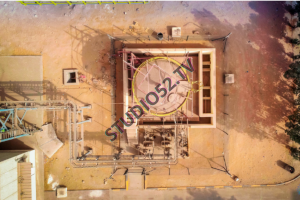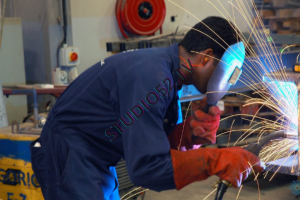The media relies heavily on creative imagery to communicate messages. It’s not easy to impress the audience these days with just any image. They are incredibly literate when it comes to visuals. Show them a bad image and they would instantly know it, even though they might not be able to point out what’s wrong. This is why as a business owner you should not be okay with poor quality images for your marketing mix. Such photos end up sending wrong messages.
Using poor-quality images on your website or social media posts will put you in the wrong light. Prospective clients and investors might think you are not successful and you won’t be able to deliver the highest quality products. Through your website or posts, if people perceive that you don’t believe in your company, people, or products, they may not be very convinced in doing business with you.
On the contrary, it could be a totally different scenario, if the industrial photographs show your power and your confidence in what you do as a company. So, let’s take a tour and find out what industrial photography is all about and how you can use it to tell the story of your company.
-
Table of Content
What is Industrial Photography?
Industrial photography constitutes anything pertaining to a company’s products, facilities, infrastructure, ambiance, or its employees, especially those toiling in the manufacturing section of the company. At times, pictures of managers or executives could also be included to spruce up the photoshoot. But remember, that no shoot is complete without capturing the manufacturing process and laborious construction jobs performed by the workers.
Industrial photography is common in various industries, including construction, mining, manufacturing, oil & gas, energy, and transportation. Every company needs photographs of its operations, and as technology and automation continue to develop, the need for these images will only increase.
-
What are the Unique Challenges of Industrial Photography?
Industrial photography presents some unique challenges for the industrial photographer. While in portrait, landscape, or event photography a photographer works with people, and because of that, it’s easy to get some emotion in the photo. That is not always possible with industrial photography. How do you capture emotion when the subjects of your story are inanimate objects? How do you ask them to pose? Is it even possible to capture good photos?
As industrial photographers, our job is to show experience and tell a story to an audience that probably would not experience the same emotions if they were actually there. Investors and managers who are looking to invest in such projects are going to be looking at these photos. As such the photographs need to paint either the significance of the location or the warmth of the structure being built.
-
Where are Industrial Photographs Used?
Industrial photography is important because it captures the technology, innovation, and hard work that goes on behind industrial processes of all sorts. Some of the most common ways industrial photographs can be used are as follows:
- Trade Publications need industrial photographs
- Big brands that have industrial-focused magazines such as Volvo Spirit
- Architectural Journals
- Product catalogs
- Every industry needs photographs of its operations for websites, brochures, and other marketing collaterals
- Annual reports
-
What Can You Do to Get the Best Out of Your Industrial Photoshoot?
Whether you are a small-scale industry or a large-scale industry, every company needs photographs of its operations. To produce spectacular photographs, the photographer has to invest time, only then great images come into being. These images would fetch you oodles of business and help endorse the company through marketing and PR. So, wouldn’t it be great if you are prepared with what you want before the photo shoot begins? Here are some of the things you can do.
4.1 Define the Purpose
Your story will largely depend on who hired you and for what purpose photographs will be used. Usually, industrial photography jobs are to take pictures that can be used in product catalogs, showcase them on the company website, create a pitch for investors, etc. You’re telling a story through images rather than words so make sure that you know the purpose these images are going to serve.
4.2 Decide on the Type of Shots
Before contacting an industrial photographer, you need to decide on the subject of shots you are looking for – facility, people, or product. Whether you want the shoot to be indoor or outdoor. It’s also important that you define what messages you want to communicate through your photographs. Many times companies want new images but they forget that these images aren’t tied to a messaging strategy.
4.3 Tie the Photos to Your Marketing Strategy
It’s important that the photos you take have a story to communicate; they should tie back to your messaging. You might want photographs of new machines you may have bought to brag a little to your audience. That’s absolutely fine but think from your audience’s perspective if you want your audience to know about the new machine.
Think of how the new machine you have acquired would help you make a better product. How can we make the photo more visually appealing? Can you involve people at work in these photographs?
4.4 Prepare a Shot List
Create a shot list, along with which people, machines, and areas of the facility will need to be available. Discuss the shot list with the photographer before he or she arrives at your facility. The shot list also helps the photographer know which equipment to bring.
If your employees are to be included in the photos, make sure they wear proper attire, such as shirts with the company logo, or at least clean jeans, shirts, etc. Keep the area clean where the photographs are to be taken. For many industries, job safety is very important. So, make sure that the safety standards are met in the photographs. If fire extinguishers, hammers, water hoses, or signages are part of your industry, it’s good to let them be a part of the background.
If you are interested in professional industrial photographs of your processing plants or manufacturing processes, we will be more than happy to partner with you. To know more about our work view our industrial photography portfolio or contact us for more information.













